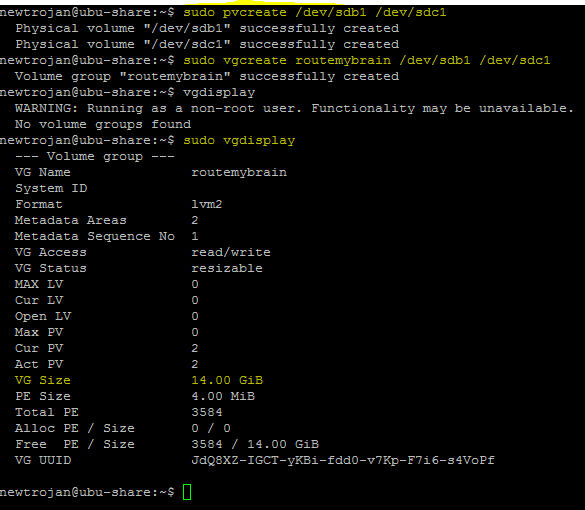


- #Logical volume manager windows Offline
- #Logical volume manager windows free
- #Logical volume manager windows windows
Regular file systems, such as EXT3 or EXT4, can then be created on a logical volume. That volume group can then be subdivided into logical volumes (LV) or used as a single large volume. Logical Volume Management enables the combining of multiple individual hard drives and/or disk partitions into a single volume group (VG). The structure of a Logical Volume Manager disk environment is illustrated by Figure 1, below.
#Logical volume manager windows windows
And while many programs, especially Windows programs, are not as well written and resilient as VirtualBox, Linux Logical Volume Management made it possible to recover without losing any data and without having to restart the time-consuming installation. After resizing the logical volume and the filesystem I resumed running the virtual machine and the installation continued as if no problems had occurred.Īlthough this type of problem may never have happened to you, running out of disk space while a critical program is running has happened to many people.

I simply assigned some of the available space to the appropriate logical volume and resized the filesystem-all while the filesystem was on-line and the running program, The virtual machine was still using the host filesystem. This means that I did not have to reformat the entire hard drive and reinstall the operating system or even reboot.
#Logical volume manager windows free
Since most modern distributions use Logical Volume Management by default, and I had some free space available on the volume group, I was able to assign additional disk space to the appropriate logical volume and then expand filesystem of the host on the fly. Note that this problem was not due to the fact that the virtual disk was too small, it was rather the logical volume on the host computer that was running out of space so that the virtual disk belonging to the virtual machine did not have enough space to expand on the host's logical volume. Fortunately, VirtualBox detected the out-of-space condition and paused the virtual machine, and even displayed an error message indicating the exact cause of the problem. About a third of the way through the installation I ran out of space on that filesystem. I thought that I had enough disk space allocated to the host filesystem in which the VM was being installed. One morning a couple years ago I started installing a newly released version of Fedora in a virtual machine on my primary workstation. I always like to run new distributions in a VirtualBox virtual machine for a few days or weeks to ensure that I will not run into any devastating problems when I start installing it on my production machines. You should check the details of the filesystems you intend to use in order to verify whether they can be resized at all and especially whether they can be resized while online.
#Logical volume manager windows Offline
The EXT2, 3, and 4 filesystems all allow both offline (unmounted) and online (mounted) resizing when increasing the size of a filesystem, and offline resizing when reducing the size. It is important to note that the filesystem itself must allow resizing for this feature to work. Second, the filesystem itself must be reduced in size before the volume on which it resides can be reduced. The volume manager also allows reducing the amount of disk space allocated to a logical volume, but there are a couple requirements. It provides features like the ability to add disk space to a logical volume and its filesystem while that filesystem is mounted and active and it allows for the collection of multiple physical hard drives and partitions into a single volume group which can then be divided into logical volumes. LVM allows for very flexible disk space management. It turns out that I was wrong, and that logical volume management is very useful. My initial reaction was that I did not need this additional layer of abstraction between me and the hard drives. I have to tell you that, when LVM (Logical Volume Manager) first made its appearance in Fedora Linux, I resisted it rather strongly. Free online course: RHEL Technical Overview.


 0 kommentar(er)
0 kommentar(er)
